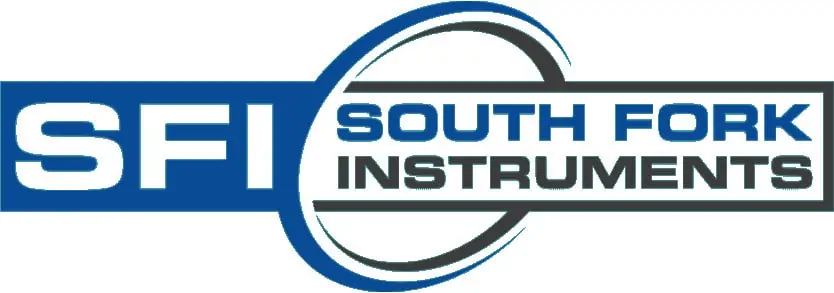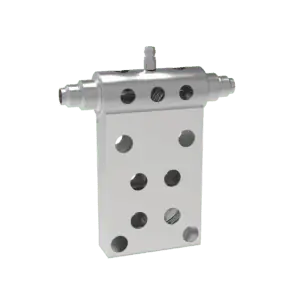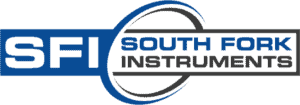Cryogenic hydrogen holds promise as part of the drive towards a clean and reliable sustainable energy source. Aside from large-scale needs such as cleaner production and better hydrogen infrastructure to realize its widespread adoption, its success also depends on effective measurement tools.
As you know, the transition of hydrogen to its cryogenic liquid form requires extremely low temperatures. Storing and transporting cryogenic hydrogen at temperatures approaching absolute zero is already routine, but transferring liquid Hydrogen between different parties demands more than the conventional flow meters that tend to struggle to perform in such frigid conditions.
In this blog post, we take a closer look at cryogenic hydrogen flow measurement, with a specific focus on the application of Coriolis mass flow meters. Known for their accuracy and versatility, they have emerged as a reliable solution for measuring liquid hydrogen flow.
Challenges of Measuring Cryogenic Hydrogen
Temperature Extremes
Measuring cryogenic hydrogen requires tools that can withstand extreme conditions. In temperatures as low as -250°C (-418°F), materials become brittle, challenging conventional measurement instruments that were not designed for such service. Coriolis mass flow meters, on the other hand, come with no such constraints.
Density Fluctuations
The density of cryogenic hydrogen fluctuates greatly as it transitions between gaseous and liquid phases. This poses a challenge for flow meters that rely on consistent fluid properties to provide accurate measurements. Coriolis meters, however, are unaffected by changes in fluid density, ensuring stable and accurate measurements under varying conditions.
Condensation and Freezing on the Outside of Measurement Tubes
In cryogenic applications, where temperatures plummet to exceptionally low levels, the risk of condensation and icing on tube surfaces becomes a critical concern. This condensation can disrupt the tube’s carefully balanced oscillation characteristics, potentially throwing the meter’s accuracy off kilter. Even sensor bodies filled with “dry” gasses like Argon or Nitrogen are not immune to icing at these extreme temperatures. Coriolis Meters installed in cryogenic Hydrogen systems must be operated in a vacuum to prevent tube condensation.
Advantages of Coriolis Flow Meters for Cryogenic Hydrogen
Coriolis flow meters use the Coriolis effect to measure the flow rate of liquids and gasses. These devices consist of an oscillating tube(s) that, when excited at a specific frequency, experiences a slight twist due to fluid flow. This twist, proportional to the flow rate, allows precise measurement and determination of the flow rate. Coriolis meters boast high precision and wide turndown ratios making them ideal for the demanding task of cryogenic hydrogen mass flow measurement.
Why Coriolis flow meters are the best choice for measuring cryogenic hydrogen flow
- High accuracy: Coriolis flow meters feature exceptional accuracy, measuring cryogenic hydrogen flow within +/- 0.5% of the reading.
- Less need for maintenance: Eliminating moving parts, Coriolis flow meters require less maintenance and experience lower failure rates compared to other flow meter types.
- Immunity to temperature and pressure changes: Immune to fluctuations in temperature and pressure, Coriolis flow meters deliver consistent performance, making them ideal for cryogenic hydrogen applications where temperature sensitivity is high. Tube construction materials like stainless steel and certain alloys make the sensors able to withstand thermal contraction and expansion without cracking or deforming.
In short, cryogenic hydrogen is increasingly important in the field of carbon-free energy solutions, particularly in its cryogenic liquid state, and requires precise flow measurement for commercial distribution. Coriolis mass flow meters are especially effective in these extreme conditions, providing accurate and reliable measurements. Their role is crucial in realizing the potential of cryogenic hydrogen as a sustainable energy resource.
Rheonik’s Solution to Cryogenic H2 measurements
Rheonik’s extensive experience with hydrogen flow measurement has equipped them to design sensors that excel in both liquid and gaseous hydrogen applications. This expertise shines through in several key features:
- Dual Oscillation Points: This innovative design allows for thicker tubes, enabling the sensors to handle a wider range of pressures and flow rates, crucial for the diverse demands of hydrogen applications.
- Embrittlement-Resistant Materials: Rheonik meticulously selects materials that prevent embrittlement caused by hydrogen exposure, ensuring long-lasting sensor performance.
- Global Hazardous Area Certifications: Both the sensors and transmitters boast international hazardous area certifications, allowing for safe and compliant installation anywhere hydrogen is measured.
This combination of advanced technology, meticulous material selection, and global compatibility positions Rheonik as a leading force in hydrogen flow measurement. Their sensors offer the flexibility, durability, and safety needed to navigate the unique challenges of this promising fuel.
Hydrogen Flow Measurement Down to -260°C
Rheonik continues to push the boundaries of hydrogen flow measurement with their latest innovation: a sensor capable of operating in a vacuum chamber. This development allows for accurate and reliable measurement of hydrogen at temperatures as low as -260°C, eliminating the risk of condensation on the measurement tubes.
How It Works:
The secret behind this innovation lies in the sensor’s unique design, aptly nicknamed the “Swiss Cheese” model. Strategically drilled holes in the outer casing allow pressure equalization inside and outside the case under vacuum conditions. This protects the sensitive vibrating measurement tubes and electronics from any potential damage while enabling the hydrogen to flow directly through the flow meter.
Benefits:
- Accurate measurements at extreme temperatures: The new sensor eliminates condensation concerns, ensuring accurate flow readings even at -260°C. This is crucial for applications that require precise measurement of cryogenic hydrogen, such as fuel cells and space exploration.
- Wide range of applications: The sensor’s versatility allows it to be integrated into a pressure vessel and connected to an existing vacuum system, making it highly suitable for diverse hydrogen applications.
- Enhanced safety: By eliminating the risk of condensation, the sensor provides a safer and more reliable solution for measuring cryogenic hydrogen flow.
Taking Hydrogen Flow Measurement to the Next Level
Rheonik’s latest innovation shows their commitment to developing cutting-edge solutions for hydrogen flow measurement. This new sensor opens up exciting possibilities for research and development in the field of cryogenic hydrogen applications.
South Fork Instruments supplies mass flow measurement systems manufactured by Rheonik. We are happy to share our expertise and help you find the most optimal measurement solution for your needs. Get in touch with us today by filling out our contact us form or give us a call at 925-461-5059.


